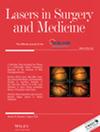Proactive esophageal cooling during laser cardiac ablation: A computer modeling study
Abstract
Background and Objectives
Laser ablation is increasingly used to treat atrial fibrillation (AF). However, atrioesophageal injury remains a potentially serious complication. While proactive esophageal cooling (PEC) reduces esophageal injury during radiofrequency ablation, the effects of PEC during laser ablation have not previously been determined. We aimed to evaluate the protective effects of PEC during laser ablation of AF by means of a theoretical study based on computer modeling.
Methods
Three-dimensional mathematical models were built for 20 different cases including a fragment of atrial wall (myocardium), epicardial fat (adipose tissue), connective tissue, and esophageal wall. The esophagus was considered with and without PEC. Laser-tissue interaction was modeled using Beer–Lambert's law, Pennes' Bioheat equation was used to compute the resultant heating, and the Arrhenius equation was used to estimate the fraction of tissue damage (FOD), assuming a threshold of 63% to assess induced necrosis. We modeled laser irradiation power of 8.5 W over 20 s. Thermal simulations extended up to 250 s to account for thermal latency.
Results
PEC significantly altered the temperature distribution around the cooling device, resulting in lower temperatures (around 22°C less in the esophagus and 9°C in the atrial wall) compared to the case without PEC. This thermal reduction translated into the absence of transmural lesions in the esophagus. The esophagus was thermally damaged only in the cases without PEC and with a distance equal to or shorter than 3.5 mm between the esophagus and endocardium (inner boundary of the atrial wall). Furthermore, PEC demonstrated minimal impact on the lesion created across the atrial wall, either in terms of maximum temperature or FOD.
Conclusions
PEC reduces the potential for esophageal injury without degrading the intended cardiac lesions for a variety of different tissue thicknesses. Thermal latency may influence lesion formation during laser ablation and may play a part in any collateral damage.


 求助内容:
求助内容: 应助结果提醒方式:
应助结果提醒方式:


